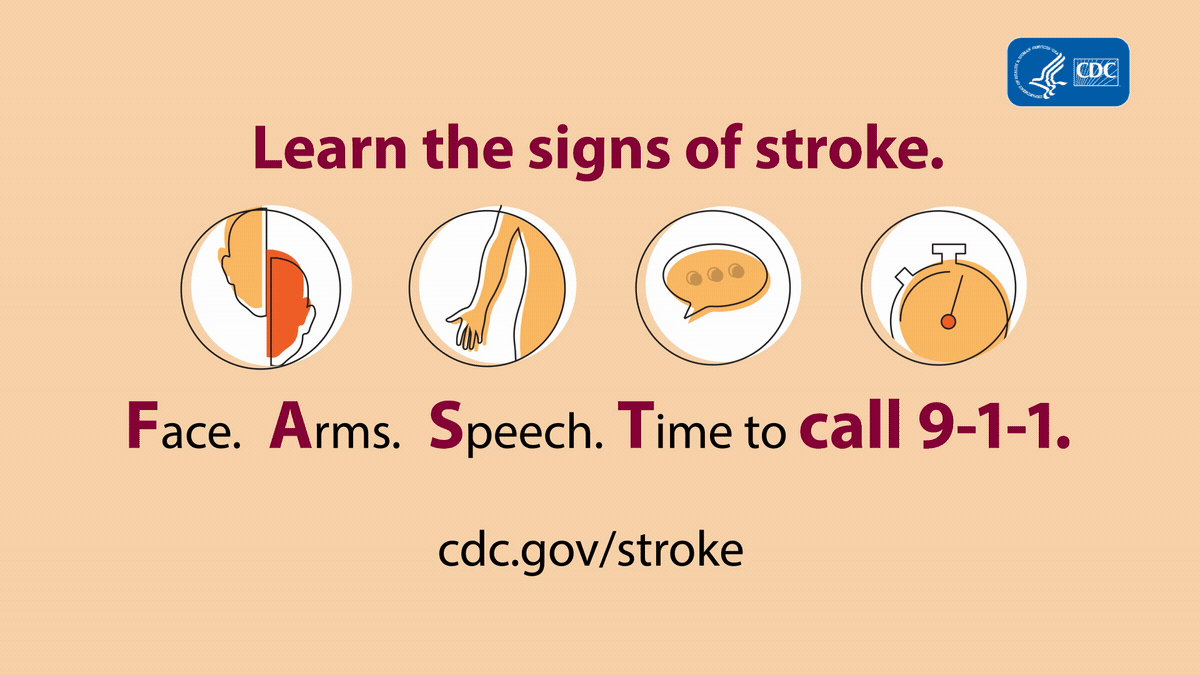Every 40 seconds, someone in America has a stroke.
Every 3.5 minutes, someone dies of a stroke.
A stroke occurs when a blood vessel that carries oxygen and nutrients to the brain is either blocked by a clot or bursts. When that happens, part of the brain can’t get the blood and oxygen it needs, so the brain cells die. Stroke is the number five cause of death and a leading cause of serious disability nationwide and around the world – but it doesn’t have to be. According to the American Stroke Association, 80 percent of strokes may be preventable.
“The risk of stroke increases with age, but strokes can – and do – occur at any age,” said Sierra Goetz, co-founder and operations manager at the HomeCare Advocacy Network (HCAN). “It’s important to know the warning signs, because early treatment often leads to higher survival rates and lower disability rates.”
Use the acronym F.A.S.T. to remember the early warning signs of a stroke.
- F = Face Drooping. Does one side of the face drop or is it numb? Ask the person to smile – is the smile uneven?
- A = Arm Weakness – Is one arm weak or numb? Ask the person to raise both arms – does one arm drift downward?
- S = Speech Difficulty – is speech slurred?
- T = Time to call 911.
Beyond F.A.S.T. other stroke symptoms include:
- Numbness or weakness of the face, arm or let – especially on one side of the body
- Confusion, trouble speaking or understanding speech
- Trouble seeing in one or both eyes
- Trouble walking, dizziness, loss of balance or coordination
- Severe headache with no apparent cause
The good news – you can significantly reduce the risk of stroke by making healthy choices and controlling any health conditions you might have, such as high blood pressure, high cholesterol or heart disease. Doctors recommend that you:
Maintain a healthy diet. An unhealthy diet can increase your chances of having a stroke, because it may lead to an increase in your blood pressure and cholesterol levels. A low-fat, high-fiber diet is best – with plenty of fruits, vegetables and whole grains.
Exercise regularly. Regular exercise can help lower your cholesterol and keep your blood pressure at healthy levels. For most people, at least 150 minutes of moderate-intensity aerobic activity, such as fast-walking or cycling is recommended.
Stop smoking. Smoking significantly increases your risk of having a stroke, because it narrows your arteries and makes your blood more likely to clot. So, if you don’t smoke, don’t start. If you do smoke, stop.
Limit alcohol. Heavy drinking can lead to weight gain, high blood pressure and trigger an irregular heartbeat, all of which can increase your risk of having a stroke. Experts believe heavy drinking multiplies the risk of stroke by more than three times.
Manage underlying conditions. If you have been diagnosed with a condition known to increase the risk of stroke, work with your doctor to make sure the condition is controlled.
For more information about stroke warning signs, prevention and recovery, check out the American Stroke Association at stroke.org.
